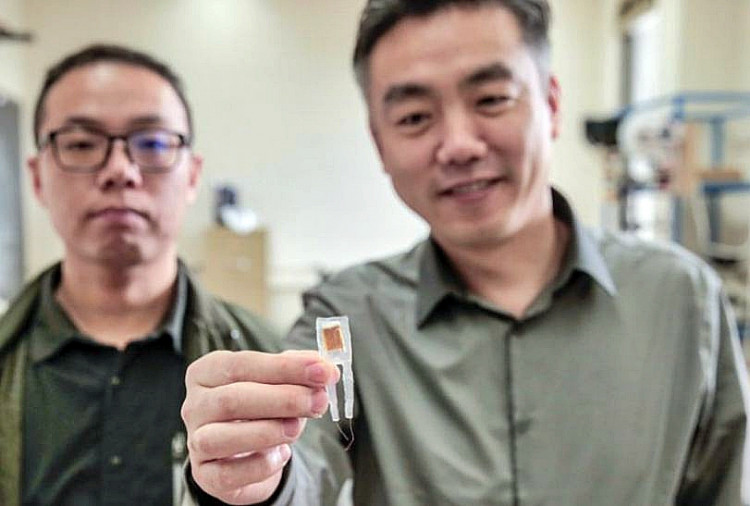A team consisting mainly of Chinese and Chinese-American scientists working in the United States has developed a simple implantable device that has the potential to combat obesity by simply fooling the brain.
The battery-free, easily implantable weight-loss device was developed by engineers at the University of Wisconsin-Madison (UWM). Lab tests showed the miniscule device helped rats shed almost 40 percent of their body weight.
The device measures less than one centimeter across, or about a third of the area of a U.S. penny. This tiny device is safe for use in the body and implantable via a minimally invasive procedure.
They control appetite by generating gentle electric pulses from the stomach's natural churning motions and deliver these pulses to the vagus nerve that links the brain and the stomach.
That gentle stimulation dupes the brain into thinking the stomach is full after only a few nibbles of food. Really simple.
"The pulses correlate with the stomach's motions, enhancing a natural response to help control food intake," said Prof. Xudong Wang, a UW-Madison professor of materials science and engineering.
Prof. Wang's device contains no batteries; no electronics, and no complicated wiring. It relies on the undulations of the stomach walls to power its internal generators. What this means is the device only stimulates the vagus nerve when the stomach moves.
Prof. Wang said the device automatically responsive to our body function, producing stimulation when needed. "Our body knows best," he noted.
Prof. Wang is a world expert in wearable and implantable capacitive electricity-generating devices. He previously developed implantable nanogenerators that harvest energy from people's beating hearts and breathing. He's also developed a motion-powered bandage for wound healing, and other such devices.
Prof. Wang and his team patented the weight-loss device through the Wisconsin Alumni Research Foundation. They intend to move forward with testing in larger animal models. They later hope to move toward human trials.
"Our expectation is that the device will be more effective and convenient to use than other technologies," believes Prof. Wang.
Better yet, the effects of the new device are also reversible. When Prof. Wang and his team removed the device after 12 weeks, the study's rats resumed their normal eating patterns and their weights increased.
One potential advantage of the new device over existing vagus nerve stimulators is that it does not require external battery charging. This is a significant advantage when you consider the inconvenience patients experience when having to charge a battery multiple times a week for an hour or so.






